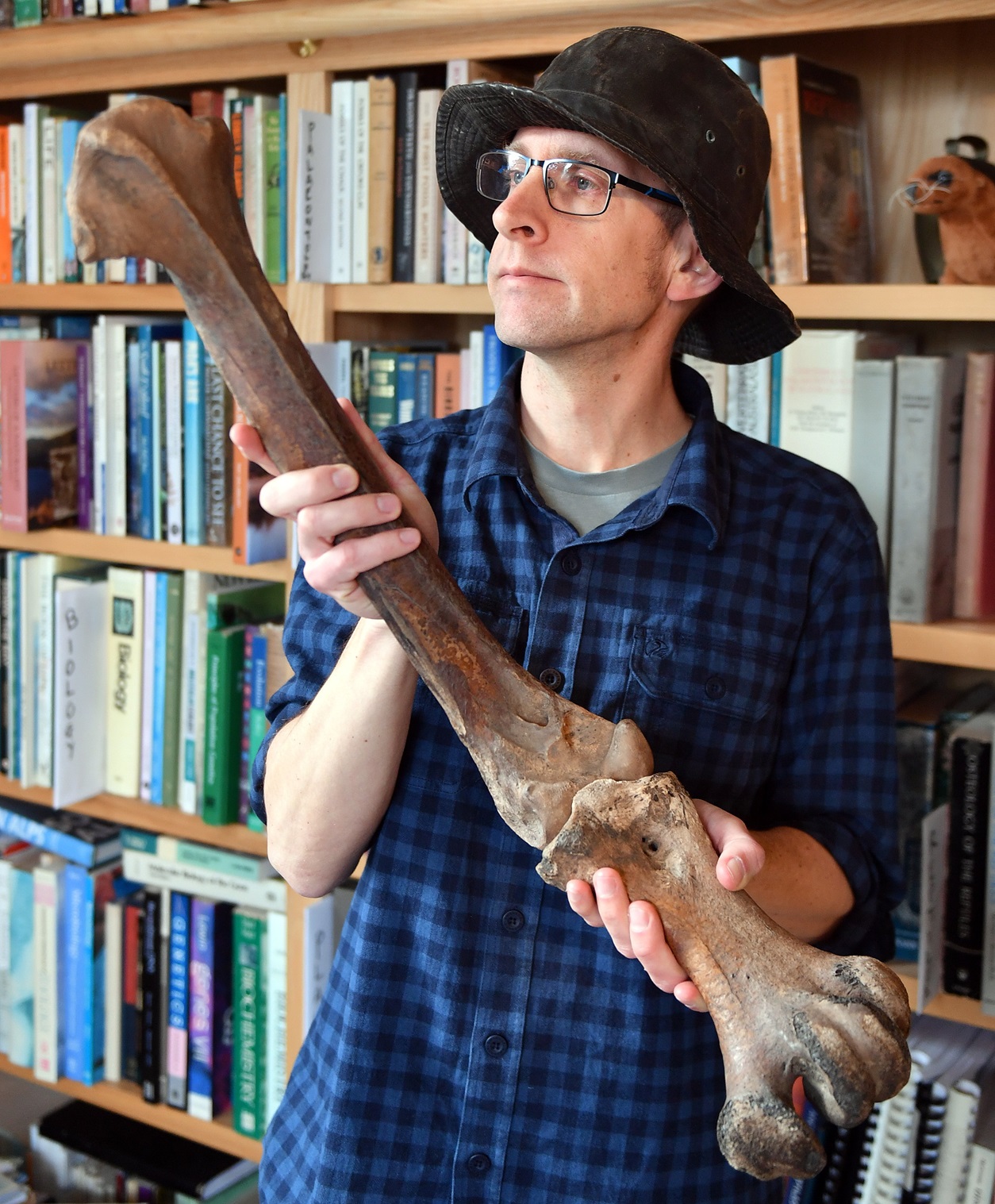Earlier this week, United States-based company Colossal Biosciences announced it aimed to genetically engineer living birds to resemble the extinct South Island giant moa by 2035, and the plan already has support from Hollywood movie director Sir Peter Jackson, Ngāi Tahu and Canterbury Museum.
Colossal claims to have already brought back a version of dire wolves, which became extinct 10,000 years ago, and has plans to do the same for the woolly mammoth and the dodo.
However, University of Otago paleogenetics lab director and paleontologist Associate Prof Nic Rawlence is not convinced moa can be brought back.
"They [Colossal] have come out with a good glossy show and a big splash, but I wouldn’t believe any of the hype. There are serious concerns.
"They announced a few months ago that they had de-extincted the dire wolf - but they didn’t. They created a genetically engineered grey wolf.
"So they won’t be de-extincting the moa. They will be creating a genetically engineered emu or some other genetically engineered ratite.
"It may look like a moa, but we will have no idea whether it functions like a moa or talks like a moa.
"It’s that quote - if it looks like a duck, walks like a duck and talks like a duck, it must be a duck.
"But in this case, it would only look like a moa.
"That’s as far as it would go. I would say it’s still a pipe dream."
Prof Rawlence said he also had "serious ethical concerns".

"They’re going to be in a game reserve for ecotourism opportunities.
"But also, if you are going to bring back more than just a zoo animal, then you need to bring back at least 500 individuals for the de-extinct population to be genetically secure and not have effects of inbreeding like you get in the English Royal Family or the Habsburg dynasty.
"Will they even be able to breed? We don’t know.
"And if they could, what are the unintended consequences of inserting moa genes into, say, an emu?
"We don’t know whether these individuals will be genetically healthy."
He said the project would also incur "opportunity costs", where money would get pulled from the conservation of existing endangered animals to fund the moa de-extinction.
Potentially, it would further endanger critically endangered species, he said.
He also had major concerns about iwi engagement in the project.
"So with Ngāi Tahu, they’re all the individual rūnanga.
"In all of the engagement our lab [the Otago paleogenetics laboratory] has done up and down the motu over the past 10 years or more, including on projects sequencing the genomes of moa, we have found there is no appetite for de-extinction.
"We know the individual runanga do not like being told what to do by Ngāi Tahu and Christchurch.
"At the top of the South Island, there are also seven iwi that aren’t Ngāi Tahu that I also know are dead set against de-extinction."

"And messing with the whakapapa, messing with the genetic code of animals, is viewed with disgust. They don’t want it to happen.
"They also have concerns about the opportunity costs, the habitats not being there, who’s going to pay to look after all of the de-extinct animals and also around who owns the DNA, who owns the DNA sequence data and concerns around samples going overseas for sequencing."
Prof Rawlence said with something this big, there needed to be more than just one research centre calling the shots around supposed Māori approval of this.
"What we have here is, for all intents and purposes, the Ngāi Tahu Research Centre saying we’re going to bring back a species that used to occur in the South Island, when you have parts of South Island Māoridom against it from within the iwi and from outside of the iwi.
"So we really need a South Island-wide consensus discussion for the South Island giant moa.
"That’s going to be difficult."
He said ethically and engagement-wise, Colossal, the Ngāi Tahu Research Centre and Canterbury Museum needed to "come clean" on how widely they had engaged.
"Because on the surface, it looks like a captain’s call on behalf of all of Ngāi Tahu."
He said the technology Colossal had developed could be a "game changer" for conserving animals we had left - such as genetically engineering a kākāpō to be resistant to disease.
"I think the money is better spent on conserving animals we have left."











